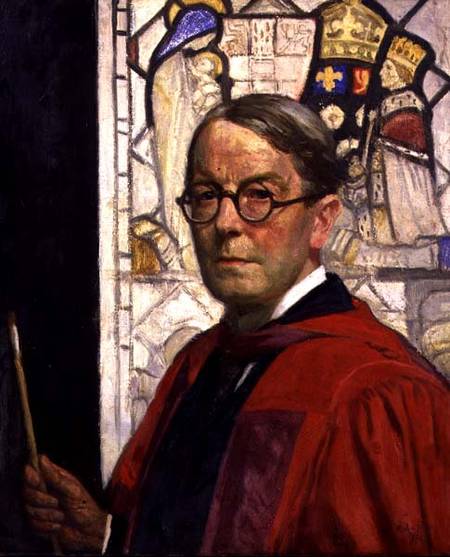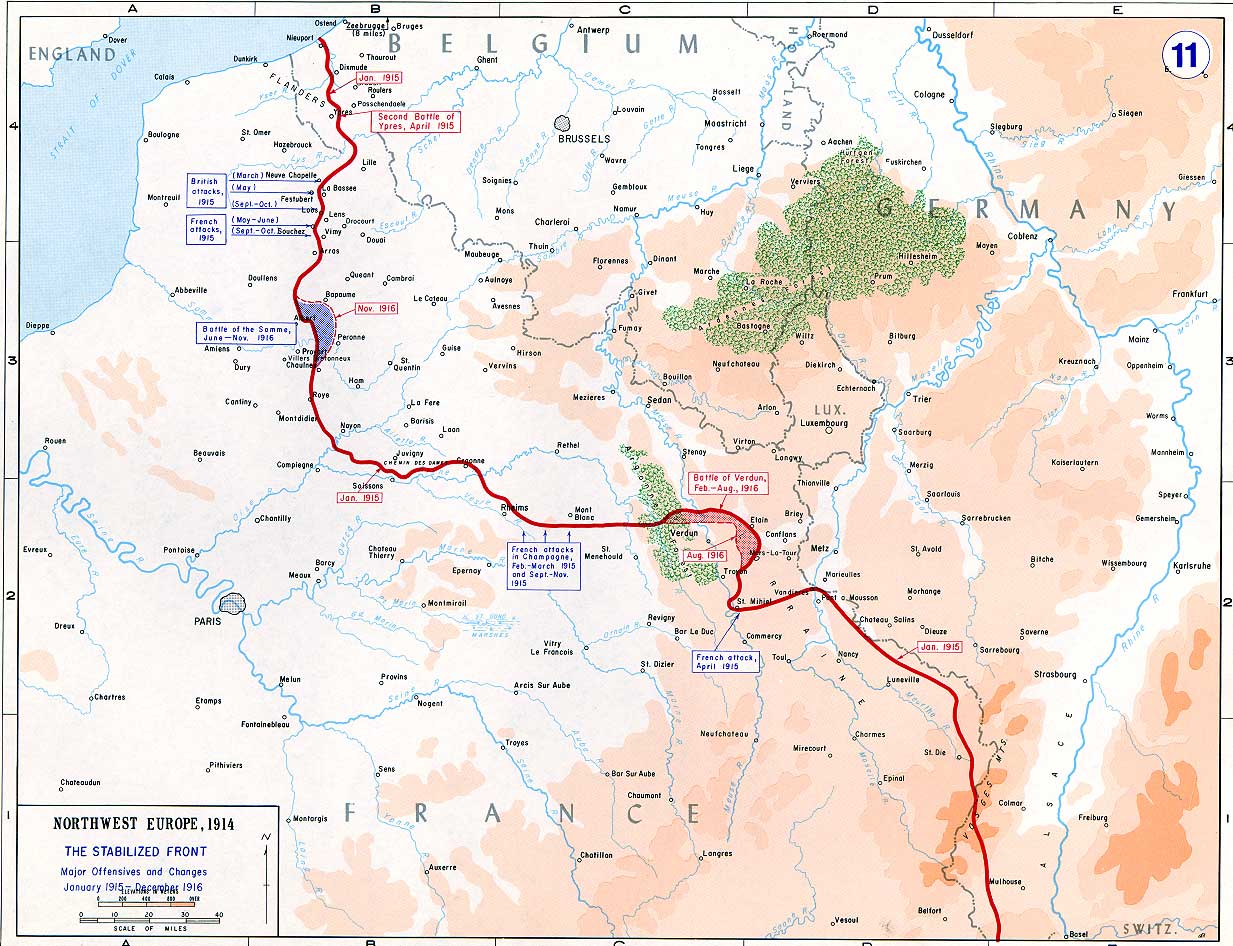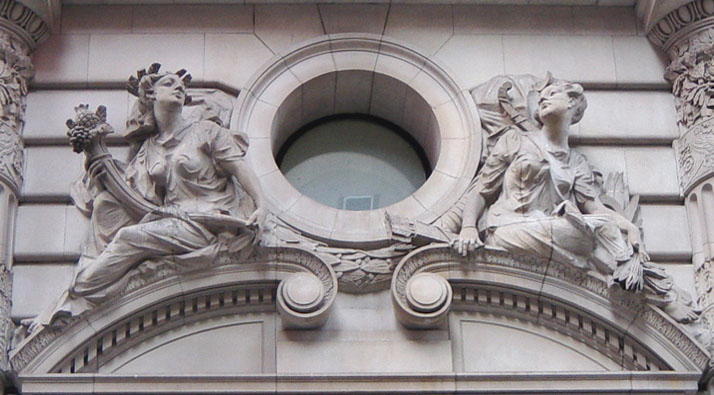|
Eugene Bourdon (architect)
Eugene Bourdon (16 July 1870 – 1 July 1916) was a Professor of Architectural Design at the Glasgow School of Art, and was influential in the development of architectural thinking and education in Glasgow in the early 20th century. Early life and education Bourdon was born in Paris on 16 July 1870. He was educated at the Condorcet Lycee, and received his Bachelier-des-lettres in 1888. Following this, he studied at the Ecole des Beaux-Arts in Paris as a pupil of the Atelier Daumet where he obtained the Diploma (ADFG). While at the Ecole he obtained medals in Architecture Decoration and Drawing, culminating in a medal at the 1896 salon. Work and influence Following graduation, he went to work for the French Government as an inspector for the Exposition Universelle of 1900. A collection of photographs taken by Bourdon around this time show architectural exteriors and interiors of churches and other historical buildings in Italy and France. Back of photographs have stamp "Eugene ... [...More Info...] [...Related Items...] OR: [Wikipedia] [Google] [Baidu] |
Portrait Of Professor Eugene Bourdon
A portrait is a painting, photograph, sculpture, or other artistic representation of a person, in which the face is always predominant. In arts, a portrait may be represented as half body and even full body. If the subject in full body better represents personality and mood, this type of presentation may be chosen. The intent is to display the likeness, personality, and even the mood of the person. For this reason, in photography a portrait is generally not a snapshot, but a composed image of a person in a still position. A portrait often shows a person looking directly at the painter or photographer, to most successfully engage the subject with the viewer, but portrait may be represented as a profile (from aside) and 3/4. History Prehistorical portraiture Plastered human skulls were reconstructed human skulls that were made in the ancient Levant between 9000 and 6000 BC in the Pre-Pottery Neolithic B period. They represent some of the oldest forms of art in the Middle East ... [...More Info...] [...Related Items...] OR: [Wikipedia] [Google] [Baidu] |
Robert Anning Bell
Robert Anning Bell (14 April 1863 – 27 November 1933) was an English artist and designer. Early life Robert Anning Bell was born in London on 14 April 1863, the son of Robert George Bell, a cheesemonger, and Mary Charlotte Knight. He studied at University College School, the Westminster School of Art, and the Royal Academy Schools, followed by a time in Paris. Career Bell was articled as an architect to his uncle, Samuel Knight (architect), Samuel Knight. On his return he shared a studio with George Frampton. With Frampton he created a series of designs for an altarpiece which was exhibited at the Arts and Crafts Movement, Arts and Crafts Exhibition Society and later installed in the Church of St Clare, Liverpool, Church of St Clare, Liverpool. From 1895 to 1899 Bell was an instructor at the University of Liverpool, Liverpool University school of architecture. During this time he became associated with the Della Robbia Pottery in Birkenhead and also was becoming increasingl ... [...More Info...] [...Related Items...] OR: [Wikipedia] [Google] [Baidu] |
1916 Deaths
Events Below, the events of the First World War have the "WWI" prefix. January * January 1 – The British Empire, British Royal Army Medical Corps carries out the first successful blood transfusion, using blood that has been stored and cooled. * January 9 – WWI: Gallipoli Campaign – The last British troops are evacuated from Gallipoli, as the Ottoman Empire prevails over a joint British and French operation to capture Constantinople. * January 10 – WWI: Erzurum Offensive – Russia defeats the Ottoman Empire. * January 12 – The Gilbert and Ellice Islands Colony, part of the British Empire, is established in modern-day Tuvalu and Kiribati. * January 13 – WWI: Battle of Wadi (1916), Battle of Wadi – Ottoman Empire forces defeat the British, during the Mesopotamian campaign in modern-day Iraq. * January 29 – WWI: Paris is bombed by German Empire, German zeppelins. * January 31 – WWI: An attack is planned on Verdun, France. Febru ... [...More Info...] [...Related Items...] OR: [Wikipedia] [Google] [Baidu] |
1870 Births
Events January * January 1 ** The first edition of ''The Northern Echo'' newspaper is published in Priestgate, Darlington, England. ** Plans for the Brooklyn Bridge are completed. * January 3 – Construction of the Brooklyn Bridge begins in New York City. * January 6 – The ''Musikverein'', Vienna, is inaugurated in Austria-Hungary. * January 10 – John D. Rockefeller incorporates Standard Oil. * January 15 – A political cartoon for the first time symbolizes the United States Democratic Party with a donkey (''A Live Jackass Kicking a Dead Lion'' by Thomas Nast for ''Harper's Weekly''). * January 23 – Marias Massacre: U.S. soldiers attack a peaceful camp of Piegan Blackfeet Indians, led by chief Heavy Runner. * January 26 – Reconstruction Era (United States): Virginia rejoins the Union. This year it adopts a Constitution of Virginia#1870, new Constitution, drawn up by John Curtiss Underwood, expanding suffrage to all male citizens over 21, in ... [...More Info...] [...Related Items...] OR: [Wikipedia] [Google] [Baidu] |
Academics Of The Glasgow School Of Art , a person who is a researcher or has expertise in an academic discipline
{{Disambiguation ...
Academic means of or related to an academy, an institution learning. Academic or academics may also refer to: * Academic staff, or faculty, teachers or research staff * school of philosophers associated with the Platonic Academy in ancient Greece * The Academic, Irish indie rock band * "Academic", song by New Order from the 2015 album ''Music Complete'' Other uses *Academia (other) *Academy (other) *Faculty (other) *Scholar A scholar is a person who is a researcher or has expertise in an academic discipline. A scholar can also be an academic, who works as a professor, teacher, or researcher at a university. An academic usually holds an advanced degree or a termina ... [...More Info...] [...Related Items...] OR: [Wikipedia] [Google] [Baidu] |
Herbert F
Herbert may refer to: People * Herbert (musician), a pseudonym of Matthew Herbert * Herbert (given name) * Herbert (surname) Places Antarctica * Herbert Mountains, Coats Land * Herbert Sound, Graham Land Australia * Herbert, Northern Territory, a rural locality * Herbert, South Australia. former government town * Division of Herbert, an electoral district in Queensland * Herbert River, a river in Queensland * County of Herbert, a cadastral unit in South Australia Canada * Herbert, Saskatchewan, Canada, a town * Herbert Road, St. Albert, Canada New Zealand * Herbert, New Zealand, a town * Mount Herbert (New Zealand) United States * Herbert, Illinois, an unincorporated community * Herbert, Michigan, a former settlement * Herbert Creek, a stream in South Dakota * Herbert Island, Alaska Arts, entertainment, and media Fictional entities * Herbert (Disney character) * Herbert Pocket, a character in the Charles Dickens novel ''Great Expectations'' * Herbert West, tit ... [...More Info...] [...Related Items...] OR: [Wikipedia] [Google] [Baidu] |
Mackintosh School Of Architecture
The Mackintosh School of Architecture (MSA) is one of the five schools which make up the Glasgow School of Art, situated in the Garnethill area of Glasgow, Scotland. The Mackintosh School of Architecture is the Glasgow School of Art's only academic school concerned with a single discipline. The school is based in the Bourdon Building, named after the French architect Eugene Bourdon, the first Professor of Architecture at the Glasgow School of Art. History Architecture has been a part of the teaching at the GSA from the middle of the 19th century. Taught on a part-time basis until 1968, the School boasts Charles Rennie Mackintosh and two of Glasgow's most notable modern architects, Andy MacMillan and Isi Metzstein of the architectural practice Gillespie, Kidd & Coia, amongst its most eminent alumni. Since 1968, the programmes have been predominantly for full-time students, but it continues to be Scotland's only school of architecture to offer part-time mode of study. Past ... [...More Info...] [...Related Items...] OR: [Wikipedia] [Google] [Baidu] |
Battle Of The Somme
The Battle of the Somme (; ), also known as the Somme offensive, was a battle of the First World War fought by the armies of the British Empire and the French Third Republic against the German Empire. It took place between 1 July and 18 November 1916 on both sides of the upper reaches of the river Somme (river), Somme in France. The battle was intended to hasten a victory for the Allies of World War I, Allies. More than three million men fought in the battle, of whom more than one million were either wounded or killed, making it one of the List of battles by casualties, deadliest battles in human history. The French and British had planned an offensive on the Somme during the Chantilly Conferences, Chantilly Conference in December 1915. The Allies agreed upon a strategy of combined offensives against the Central Powers in 1916 by the French, Russian, British and Italian armies, with the Somme offensive as the Franco-British contribution. The French army was to undertake the m ... [...More Info...] [...Related Items...] OR: [Wikipedia] [Google] [Baidu] |
Glasgow School Of Art
The Glasgow School of Art (GSA; ) is a higher education art school based in Glasgow, Scotland, offering undergraduate degrees, post-graduate awards (both taught and research-led), and PhDs in architecture, fine art, and design. These are all awarded by the University of Glasgow. The school is housed in a number of buildings around Renfrew Street in the centre of Glasgow, upon Garnethill, an area first developed by William Harley of Blythswood Hill in the early 1800s. The most famous of its buildings was designed by Charles Rennie Mackintosh in phases between 1896 and 1909. The eponymous Mackintosh Building soon became one of the city's iconic landmarks, of international fame. It is a pioneer of the Modern Style (British Art Nouveau style). The building was severely damaged by fire in May 2014 and destroyed by a second fire in June 2018, with only the burnt-out shell remaining. Plans are in place for its rebuilding in accordance with Charles Rennie Mackintosh's style and content ... [...More Info...] [...Related Items...] OR: [Wikipedia] [Google] [Baidu] |
Beaux-Arts Architecture
Beaux-Arts architecture ( , ) was the academic architectural style taught at the in Paris, particularly from the 1830s to the end of the 19th century. It drew upon the principles of French neoclassicism, but also incorporated Renaissance and Baroque elements, and used modern materials, such as iron and glass, and later, steel. It was an important style and enormous influence in Europe and the Americas through the end of the 19th century, and into the 20th, particularly for institutional and public buildings. History The Beaux-Arts style evolved from the French classicism of the Style Louis XIV, and then French neoclassicism beginning with Style Louis XV and Style Louis XVI. French architectural styles before the French Revolution were governed by Académie royale d'architecture (1671–1793), then, following the French Revolution, by the Architecture section of the . The academy held the competition for the Grand Prix de Rome in architecture, which offered prize winn ... [...More Info...] [...Related Items...] OR: [Wikipedia] [Google] [Baidu] |
Jean-Louis Pascal
Jean-Louis Pascal (4 June 1837 – 17 May 1920) was an academic French architect. Life Born in Paris, Pascal was taught at the École nationale supérieure des Beaux-Arts by Émile Gilbert and Charles-Auguste Questel. He won the Grand Prix de Rome for Architecture in 1866, which put him in residency at the Villa Medici in Rome from 1867 through 1870. After brief service in the Franco-Prussian War, he returned to Paris to assist Hector Lefuel with the restoration of the Louvre, and succeeded Questel as the head of his own old atelier. In 1875, his star rising in the academy system, Pascal was appointed the head architect for the National Library of France upon the death of the previous architect, Henri Labrouste. Pascal brought this long project nearly to completion, contributing interiors and exteriors, the Oval Room, the Salon Voltaire, the periodical room, and the grand staircase. His other major work includes many monuments and memorial throughout France, the ... [...More Info...] [...Related Items...] OR: [Wikipedia] [Google] [Baidu] |







